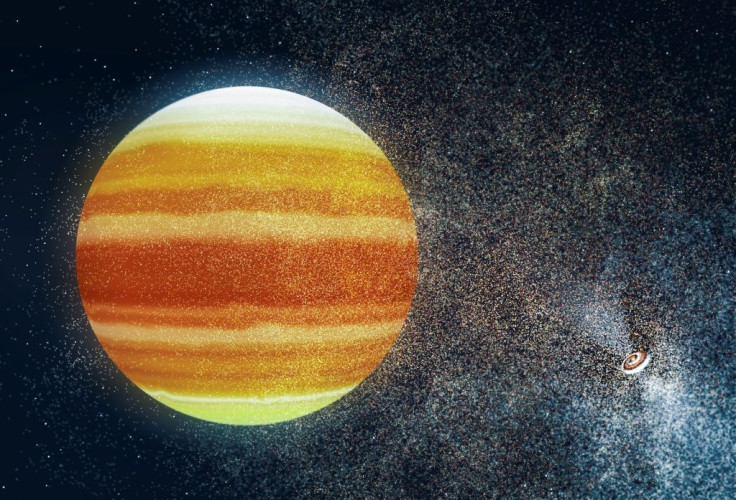Pulsars Could Have Habitable Planets With Extraterrestrial Life, Astronomers Say

Pulsars unleash massive amounts of radiation onto whatever planets might be orbiting in their solar systems, but it is still possible for some of those planets to be habitable and carry alien life, according to researchers.
The scientists explained that a planet with a tremendous atmosphere could cushion organisms from the pulsars constant bombardment of X-rays and “high-energy particles,” according to the Netherlands Research School for Astronomy, also known as NOVA.
Pulsars are rapidly spinning remnants of stars that, because of their fast rotations that can reach hundreds of times a second, look like they are pulsing. They also have intense magnetic fields. This class of stars was first discovered 50 years ago and since then scientists have spotted a few thousand of them in the night sky.
They are formed when an old, massive star explodes in a supernova and leaves behind a small corpse known as a neutron star.

Astronomers have devoted ample time to investigating the habitable zones of stars around the universe. When the star is like the sun, a habitable zone usually translates to the orbital distance at which the amount of heat reaching the planet’s surface is ideal to support liquid water, an essential ingredient for life. But planets in these habitable zones must also have protections against the dangerous conditions of space, like magnetic fields and atmospheres that block harmful radiation.
According to NOVA, this research is the first time astronomers have investigated the factors that would translate to habitability in a solar system orbiting around a neutron star. Their research was based on a pulsar that is 2,300 light-years away from us, in the constellation Virgo.
A study in the journal Astronomy & Astrophysics explains that in addition to having a large atmosphere, perhaps a million times thicker than Earth’s, a habitable planet around a pulsar would need to be larger than Earth, in order to hold onto that atmosphere.
“The calculations show that the habitable zone around a neutron star can be as large as the distance from our Earth to our sun,” NOVA said. “The conditions on the pulsar planet surface might resemble those of the deep sea at Earth.”
At the Virgo pulsar, scientists know of three planets in orbit, two of which are four or five times more massive than Earth and potentially at the right distance from the pulsar to be temperate.
“According to our calculations, the temperature of the planets might be suitable for the presence of liquid water on their surface,” researcher Alessandro Patruno said in the NOVA statement. “Though, we don’t know yet if the two super-Earths have the right, extremely dense atmosphere.”
© Copyright IBTimes 2024. All rights reserved.





















